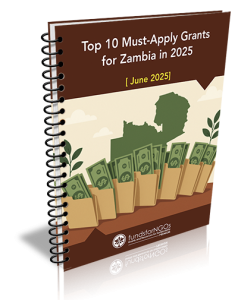In the ever-evolving landscape of nonprofit organizations, the need for effective campaign tools has never been more critical. Nonprofits are tasked with not only raising awareness for their causes but also securing funding, engaging volunteers, and building lasting relationships with their communities. The right tools can streamline these processes, making it easier for organizations to focus on their mission rather than getting bogged down in administrative tasks.
From social media management to data analytics, a variety of resources are available to help nonprofits maximize their impact. As the digital world continues to expand, nonprofits must adapt to new technologies and platforms that can enhance their outreach efforts. Campaign tools are designed to facilitate communication, foster engagement, and ultimately drive donations.
By leveraging these tools, organizations can create more effective campaigns that resonate with their target audiences. This article will explore several essential nonprofit campaign tools, including social media management, email marketing, fundraising platforms, volunteer management systems, and data analytics. Each section will provide actionable insights and real-world examples to help nonprofits navigate the complexities of modern fundraising and outreach.
Social Media Management
Real-time Engagement Opportunities
Platforms like Facebook, Twitter, Instagram, and LinkedIn offer unique opportunities for organizations to engage with their audiences in real-time. Effective social media management tools can help nonprofits schedule posts, track engagement metrics, and analyze audience demographics.
Streamlining Social Media Management
Tools such as Hootsuite and Buffer allow organizations to manage multiple accounts from a single dashboard, making it easier to maintain a consistent online presence. Moreover, social media is not just about broadcasting messages; it’s also about fostering community.
Cultivating a Loyal Online Community
Nonprofits can use platforms to share stories of impact, highlight volunteer efforts, and showcase donor contributions. For instance, the American Red Cross effectively utilizes Twitter to provide timely updates during disasters while also sharing personal stories from those they’ve helped. By engaging followers through compelling content and interactive campaigns, nonprofits can cultivate a loyal online community that is more likely to support their initiatives.
Email Marketing
Email marketing remains one of the most effective tools for nonprofit organizations looking to communicate with their supporters. Unlike social media, where algorithms can limit visibility, email allows nonprofits to reach their audience directly in their inboxes. Platforms like Mailchimp and Constant Contact offer user-friendly interfaces for creating visually appealing newsletters and targeted campaigns.
These tools enable organizations to segment their audience based on interests or past interactions, ensuring that messages are relevant and personalized. In addition to regular newsletters, nonprofits can use email marketing for specific campaigns or fundraising drives. For example, the World Wildlife Fund (WWF) often sends targeted emails during critical fundraising periods, such as Earth Day or Giving Tuesday.
These emails not only inform supporters about the organization’s work but also include clear calls to action that encourage donations or participation in events. By tracking open rates and click-through rates, nonprofits can continuously refine their email strategies to improve engagement and conversion rates.
Fundraising Platforms
Fundraising platforms are essential for nonprofits looking to streamline their donation processes and maximize contributions. Websites like GoFundMe Charity, Classy, and Donorbox provide user-friendly interfaces that allow organizations to create customized donation pages. These platforms often include features such as recurring donation options, peer-to-peer fundraising capabilities, and integration with social media channels.
This flexibility enables nonprofits to tailor their fundraising efforts to meet the needs of their supporters. A notable example is Charity: Water, which uses its own fundraising platform to encourage supporters to create personal campaigns for their birthdays or special occasions. This approach not only raises funds but also empowers individuals to take ownership of their contributions.
By leveraging technology in innovative ways, nonprofits can tap into new donor bases and create a sense of community around their fundraising efforts.
Volunteer Management
Volunteers are the backbone of many nonprofit organizations, and effective volunteer management tools are crucial for maximizing their contributions. Platforms like VolunteerMatch and SignUpGenius help organizations recruit, schedule, and communicate with volunteers efficiently. These tools allow nonprofits to post opportunities that match volunteers’ skills and interests while also providing a streamlined process for signing up and tracking hours.
Moreover, successful volunteer management goes beyond just scheduling; it involves building relationships and recognizing contributions. Nonprofits like Habitat for Humanity have implemented robust volunteer programs that include training sessions, appreciation events, and feedback mechanisms. By investing in volunteer engagement strategies, organizations can foster loyalty and encourage long-term commitment from their supporters.
Data Analytics and Reporting
In an age where data drives decision-making, nonprofits must harness the power of analytics to measure the effectiveness of their campaigns. Data analytics tools such as Google Analytics and Tableau provide insights into website traffic, donor behavior, and campaign performance. By analyzing this data, organizations can identify trends, assess the success of various initiatives, and make informed adjustments to their strategies.
For instance, a nonprofit focused on environmental conservation might use data analytics to track the impact of its social media campaigns on fundraising efforts. By correlating spikes in donations with specific posts or outreach efforts, the organization can refine its messaging and target audience for future campaigns. Additionally, reporting tools can help nonprofits communicate their impact to stakeholders and funders effectively.
By presenting data-driven results in a compelling manner, organizations can build trust and demonstrate accountability. In conclusion, the landscape of nonprofit campaign tools is vast and varied, offering numerous opportunities for organizations to enhance their outreach efforts and achieve their missions. By embracing social media management, email marketing, fundraising platforms, volunteer management systems, and data analytics, nonprofits can create more effective campaigns that resonate with their audiences.
As technology continues to evolve, staying informed about the latest tools and best practices will be essential for nonprofits seeking grants, partnerships, and fundraising success. Ultimately, leveraging these resources will empower organizations to make a more significant impact in their communities and beyond.









































